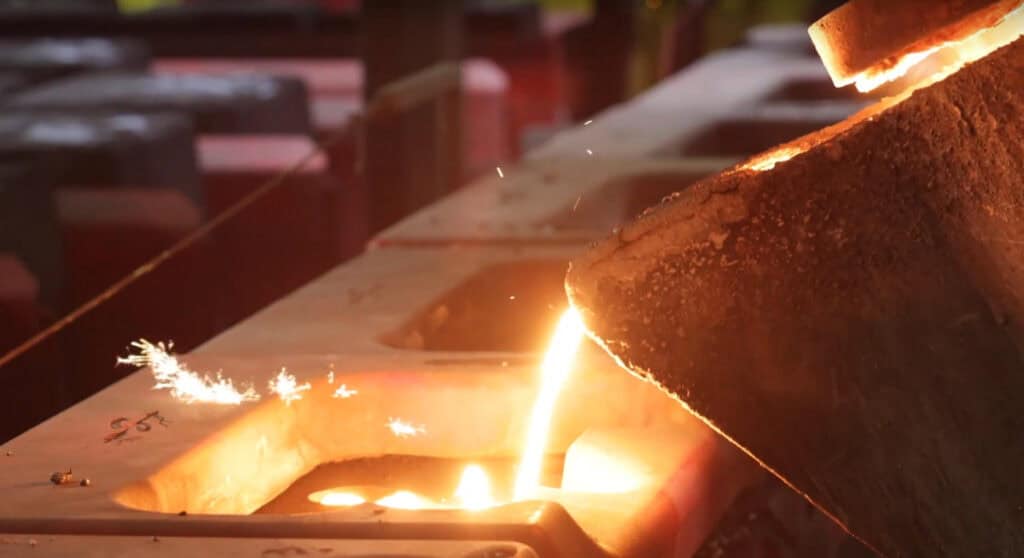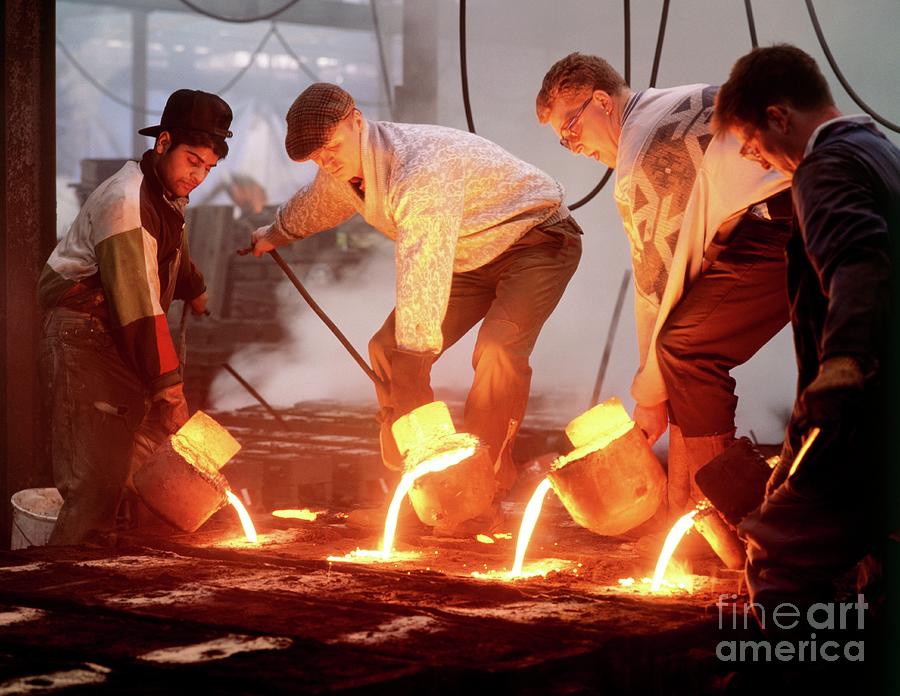From mold to masterpiece: how Metal Casting brings products to life
Discovering the Duty of a Metal Foundry in Modern Manufacturing Processes
Metal foundries are pivotal in the landscape of modern-day production. They offer essential parts throughout various markets, adjusting to the demands of markets such as automobile and aerospace. Advanced methods such as 3D printing and automated casting have actually changed their procedures. In addition, sustainability has ended up being a top priority, influencing their methods. As these foundries develop, the ramifications for producing efficiency and development are considerable, questioning about their future trajectory in an ever-changing economic situation.
The Evolution of Metal Casting Strategies

With the increase of mass production, foundries took on methods like die casting and lost foam casting, simplifying the production procedure and reducing waste. Each advancement in metal casting methods has dealt with the needs of various sectors, from automotive to aerospace. As metal casting continues to advancement, the interplay in between technique and innovation stays critical in conference modern-day production obstacles, making certain that foundries grow and adjust in an ever-changing landscape.
Integration of Advanced Technologies in Foundries
Although standard metal casting approaches have offered the sector well for centuries, the assimilation of advanced modern technologies in foundries is reinventing the manufacturing landscape. Automation and robotics streamline production procedures, boosting efficiency and minimizing the danger of human error. Technologies such as 3D printing enable fast prototyping and the creation of complicated geometries that were once impossible with standard methods. Additionally, information analytics and the Internet of Things (IoT) allow real-time tracking and anticipating upkeep, inevitably leading to lowered downtime and boosted productivity. These advancements likewise promote personalization, allowing producers to respond rapidly to market demands. As sustainability comes to be a concern, the adoption of eco-friendly modern technologies, such as electrical melting heating systems and progressed sand recovery systems, additionally shows the sector's commitment to advancement. Jointly, these innovations not only boost operational effectiveness but likewise setting foundries at the leading edge of modern production techniques.
The Effect of Material Scientific Research on Foundry Operations
Material scientific research plays an essential duty in enhancing foundry operations, influencing both the selection of materials and the total casting procedure. Developments in product scientific research give a deeper understanding of the buildings of steels and alloys, enabling foundries to select one of the most ideal materials for particular applications. This expertise improves the efficiency and resilience of actors items, which is essential for meeting sector standards.
Technologies in product solutions and additives add to improved casting methods, reducing flaws and enhancing production efficiency. The development of innovative metal compounds and wise products enables foundries to create lighter, stronger components, which are significantly searched for in different markets such as automotive and aerospace.
Furthermore, material scientific research aids in the recycling of steels, making procedures a lot more cost-effective and effective. By leveraging the most recent findings in product science, foundries can adjust to advancing market demands, guaranteeing their competition in a swiftly changing production landscape.
Sustainability Practices in Modern Metal Foundries
With the expanding emphasis on environmental obligation, contemporary metal foundries are progressively implementing sustainability techniques to minimize their ecological footprint (Aluminum Foundry). One essential strategy entails the recycling of scrap metal, which not just lowers waste but likewise conserves power and raw products. Foundries are adopting advanced melting modern technologies that enhance power performance, consequently decreasing greenhouse gas exhausts. Furthermore, making use of environmentally pleasant finishes and materials has actually gained grip, further reducing hazardous emissions throughout manufacturing
Water conservation methods, such as closed-loop air conditioning systems, are being executed to decrease freshwater usage. Lots of foundries are additionally spending in renewable resource sources, like solar helpful hints and wind, to power their procedures, thus decreasing dependence on fossil fuels. Personnel training programs focused on sustainability techniques advertise a society of environmental recognition within the workforce. These efforts jointly add to a much more sustainable future for metal foundries while satisfying the needs of eco-conscious consumers.
The Future of Foundries in a Transforming Economic Landscape
As the global economy develops, foundries face a myriad of difficulties and opportunities that will form their future (Aluminum Foundry). The boosting need for light-weight materials and progressed alloys requires advancement in production strategies and technical combination. Automation and smart manufacturing techniques are becoming necessary for improving effectiveness and reducing operational costs. Additionally, the surge of sustainability problems forces foundries to embrace greener procedures and reusing campaigns, straightening with global environmental objectives
The financial landscape is additionally moving, with supply chain disturbances and fluctuating resources rates offering considerable hurdles. Foundries have to adapt by diversifying their his explanation supply sources and buying materials science. Furthermore, collaboration with industries such as eco-friendly power and electric automobiles can foster growth. Ultimately, the future of foundries will certainly rely on their capacity to leverage technological improvements while continuing to be responsive to market characteristics and environmental imperatives, ensuring their significance in modern manufacturing.
Often Asked Inquiries
What Types of Metals Are Generally Made Use Of in Foundries Today?
Commonly made use of metals in foundries today include light weight aluminum, iron, steel, zinc, and copper. These materials are favored for their diverse residential or commercial properties, making it possible for a variety of applications in markets such as auto, aerospace, and building.
How Does a Factory Guarantee Top Quality Control in Its Products?

What Safety Measures Are Implemented in a Metal Foundry?
Metal foundries implement precaution including personal safety equipment, ventilation systems to decrease breathing of fumes, regular safety and security training for staff members, emergency reaction protocols, and extensive tools upkeep to lessen risks and guarantee a secure workplace.
For how long Does the Metal Casting Process Generally Take?
The metal casting process normally takes a number of hours to days, relying on elements such as the complexity of the mold visit their website and mildew, the kind of metal utilized, and cooling times. Each task's demands greatly influence the duration.
What Industries Primarily Rely Upon Metal Foundries for Manufacturing?
Automotive, aerospace, machinery, and building and construction industries mostly count on metal foundries for manufacturing. These fields use cast metals for elements, making certain sturdiness and efficiency crucial for their particular applications in production and assembly processes.
Metal foundries are essential in the landscape of contemporary manufacturing. Aluminum Casting. Conventional metal casting techniques have offered the industry well for centuries, the combination of innovative modern technologies in foundries is changing the production landscape. Developments in product science provide a much deeper understanding of the properties of alloys and steels, allowing foundries to select the most suitable products for details applications. With the expanding emphasis on environmental duty, contemporary metal foundries are increasingly implementing sustainability techniques to lessen their ecological impact. Automotive, machinery, building and construction, and aerospace markets mostly rely on metal foundries for manufacturing